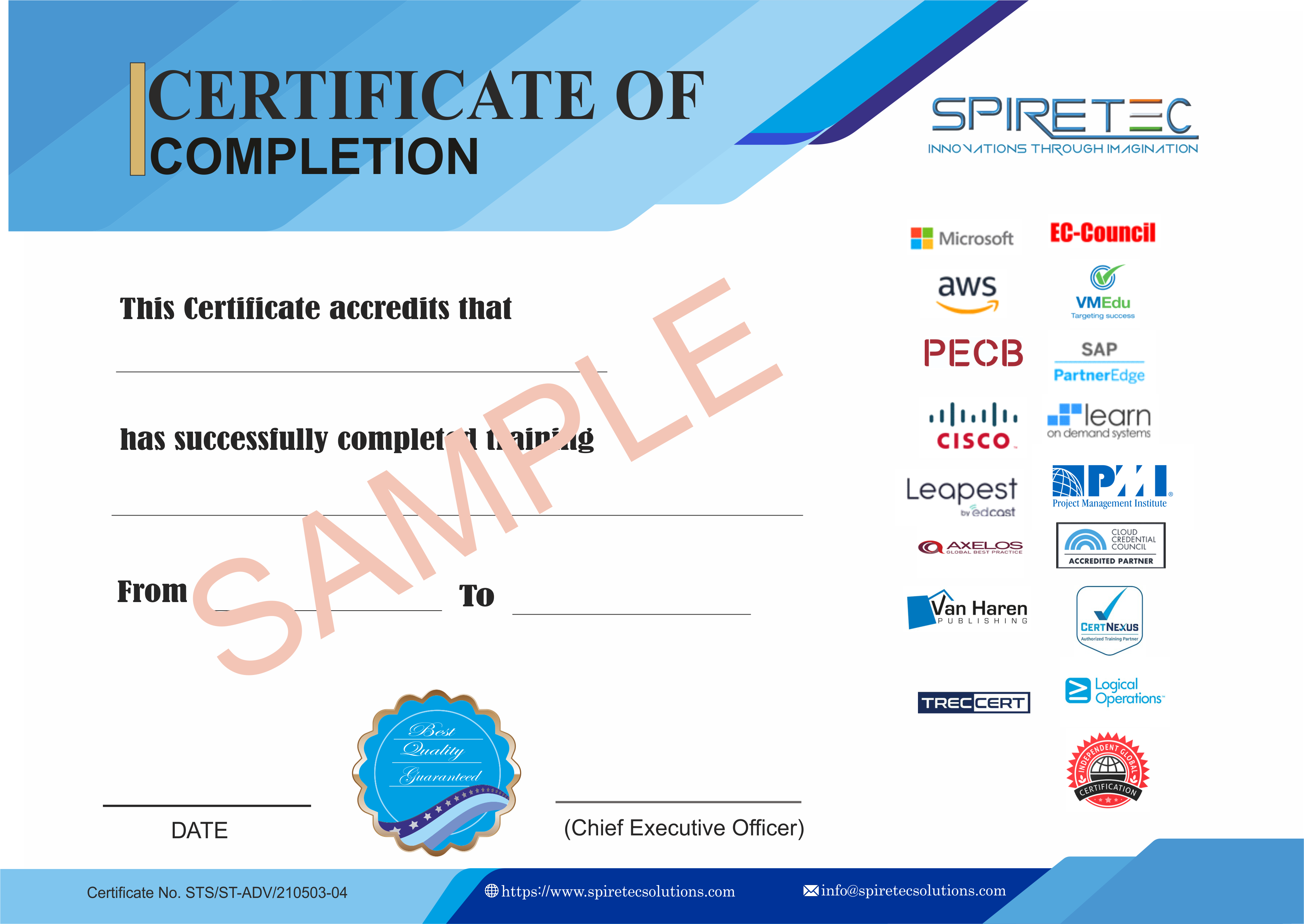The M55371A : Windows Server Administration course is designed to provide learners with a comprehensive understanding of the Windows Server ecosystem, essential for those aspiring to become proficient in Windows Server system administration. This course covers a range of topics from the basics of Windows Server to advanced features and services, including identity services, network infrastructure, file and storage management, virtualization, high availability, and disaster recovery. Through a series of lessons and hands-on labs, participants will gain practical experience deploying, managing, and configuring various Windows Server roles and features. The course equips students with the skills necessary for maintaining and securing a Windows Server environment, thereby preparing them for real-world server administration tasks. By the end of the course, learners will be well-versed in Windows Server administration, enabling them to effectively manage and troubleshoot server systems within their organizations.
Audience Profile:
This course is intended for Information Technology (IT) Professionals who have some experiencing working with Windows Server and are looking for a single five-day course that covers core administration components and technologies in Windows Server 2019. This course also helps server administrators from previous Windows Server versions to update their knowledge and skills related to Windows Server. The course is also to individuals from a service desk role who wish to transition into server maintenance.
Outcomes:
After completing this course, students will be able to:
-
Use administrative techniques and tools in Windows Server
-
Implement identity Services
-
Manage network infrastructure services
-
Configure file servers and storage
-
Manage virtual machines using Hyper-V virtualisation and containers
-
Implement high availability and disaster recovery solutions
-
Apply security features to protect critical resources
-
Configure Remote Desktop Services
-
Configure a virtual machine-based desktop infrastructure deployment
-
Implement remote access and web services
-
Implement service monitoring and performance monitoring and apply troubleshooting
-
Perform upgrades and migration related to AD DS, and storage.
Prerequisites:
-
Some exposure to and experience with Active Directory Domain Services (AD DS) concepts and technologies in Windows Server.
-
Experience and an understanding of core networking technologies such as IP addressing, name resolution, and Dynamic Host Configuration Protocol (DHCP).
-
Experience working with and an understanding of Microsoft Hyper-V and basic server virtualization concepts.
-
An awareness of basic security best practices.
-
Experience working hands-on with Windows client operating systems such as Windows 10 or Windows 11.
-
Basic experience with Windows PowerShell.
Course Outline:
Module 1: Windows Server Administration Overview
This module describes how to distinguish different Windows Server editions and techniques for deployment, servicing, and activation. It introduces Windows Server Core and compares it with the Desktop Experience version. It also covers tools for administering Windows Server, such as Windows Admin Center, PowerShell, and delegation of privileges.
Lessons:
-
Introducing Windows Server
-
Windows Server Core Overview
-
Windows Server Administration Principles and Tools Overview
Lab: Deploying and Configuring Windows Server
Outcomes:
Module 2: Identity Services in Windows Server
This module introduces identity services, including Active Directory Domain Services (AD DS) in a Windows Server environment. It covers deploying domain controllers, integrating Azure AD with AD DS, Group Policy basics, and Active Directory Certificate Services.
Lessons:
-
AD DS Overview
-
Deploying Windows Server Domain Controllers
-
Azure AD Overview
-
Implementing Group Policy
-
Active Directory Certificate Services Overview
Lab: Implementing Identity Services and Group Policy
Outcomes:
-
Describe AD DS and deploy domain controllers.
-
Integrate Azure AD with AD DS.
-
Configure Group Policy and certificate services.
Module 3: Network Infrastructure Services in Windows Server
This module covers implementing core network infrastructure services, including DNS, DHCP, IPAM, and Remote Access Services.
Lessons:
-
Deploying and Managing DHCP
-
Deploying and Managing DNS Service
-
Deploying and Managing IPAM
-
Remote Access Services in Windows Server
Lab: Configuring Network Infrastructure Services
-
Deploying and Configuring DHCP
-
Deploying and Configuring DNS
-
Implementing Web Application Proxy
Outcomes:
-
Configure and manage DHCP, DNS, and IPAM.
-
Use Remote Access Services.
Module 4: File Servers and Storage Management in Windows Server
This module discusses file sharing, Storage Spaces technology, data deduplication, iSCSI-based storage, and deploying DFS.
Lessons:
-
Volumes and File Systems in Windows Server
-
Implementing Sharing in Windows Server
-
Implementing Storage Spaces in Windows Server
-
Implementing Data Deduplication
-
Implementing iSCSI
-
Deploying Distributed File System
Lab: Implementing Storage Solutions
-
Configuring iSCSI Storage
-
Configuring Redundant Storage Spaces
-
Implementing Data Deduplication
Outcomes:
Module 5: Hyper-V Virtualization and Containers in Windows Server
This module explains how to implement and configure Hyper-V VMs and containers, including security technologies and Kubernetes integration.
Lessons:
-
Hyper-V in Windows Server
-
Configuring VMs
-
Securing Virtualization in Windows Server
-
Containers in Windows Server
-
Overview of Kubernetes
Lab: Configuring Virtualization in Windows Server
Outcomes:
-
Configure Hyper-V, VMs, and containers.
-
Use Kubernetes with Windows Server.
Module 6: High Availability in Windows Server
This module covers failover clustering, stretch clusters, and high availability for Hyper-V VMs.
Lessons:
-
Planning for Failover Clustering
-
Creating and Configuring Failover Clusters
-
Overview of Stretch Clusters
-
High Availability with Hyper-V VMs
Lab: Implementing Failover Clustering
Outcomes:
Module 7: Disaster Recovery in Windows Server
This module covers disaster recovery technologies, including Hyper-V Replica, Azure Site Recovery, and Windows Server Backup.
Lessons:
Lab: Implementing Disaster Recovery
Outcomes:
Module 8: Windows Server Security
This module explains security features, including credential protection, Just Enough Administration (JEA), and securing SMB traffic.
Lessons:
-
Credential Protection
-
Hardening Windows Server Security
-
Just Enough Administration (JEA)
-
Securing and Analyzing SMB Traffic
-
Windows Update Management
Lab: Configuring Security
Outcomes:
Module 9: Remote Desktop Services in Windows Server
This module introduces Remote Desktop Protocol (RDP) and Virtual Desktop Infrastructure (VDI) features, session-based desktops, and virtual desktops.
Lessons:
Lab: Configuring Remote Desktop Services
Outcomes:
Module 10: Remote Access and Web Services in Windows Server
This module discusses implementing VPNs, Network Policy Server (NPS), and Microsoft IIS.
Lessons:
-
Implementing VPNs
-
Always On VPN
-
Implementing NPS
-
Configuring IIS
Lab: Deploying Network Workloads
-
Configuring VPNs
-
Deploying IIS
Outcomes:
-
Configure VPNs and NPS.
-
Deploy and manage IIS.
Module 11: Server and Performance Monitoring
This module highlights monitoring tools, performance baselines, and troubleshooting using event logs.
Lessons:
-
Monitoring Tools Overview
-
Using Performance Monitor
-
Event Log Troubleshooting
Lab: Monitoring Windows Server
Outcomes:
Module 12: Upgrade and Migration in Windows Server
This module focuses on AD DS, Storage Migration Service, and Windows Server migration tools.
Lessons:
Lab: Migrating Server Workloads
Outcomes:







 Live Online Training (Duration : 40 Hours)
Live Online Training (Duration : 40 Hours)
